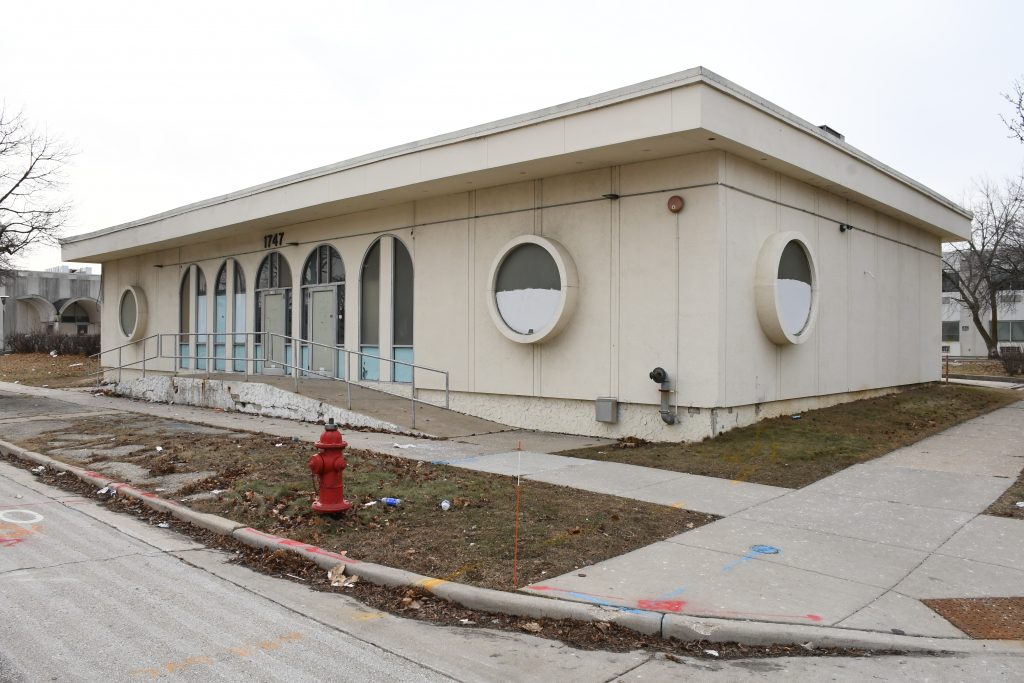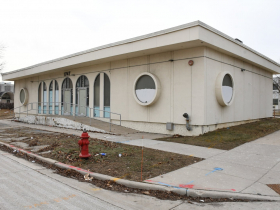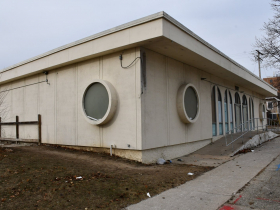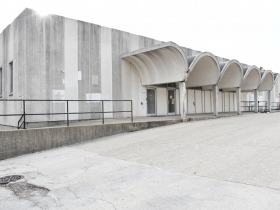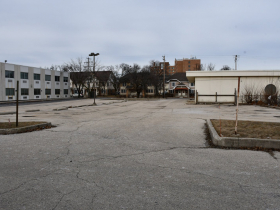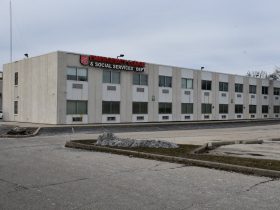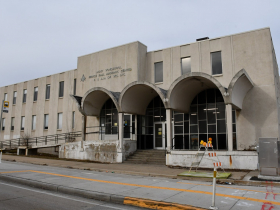Council Will Decide Fate of Buildings Designed by State’s First Black Architect
Salvation Army seeks to replace two Century City Plaza buildings from 1970s.
The fate of a three-building complex that is said to be the first and only Black designed, developed and owned commercial complex in Wisconsin is likely to hinge on a decision by the Common Council.
The Salvation Army of Milwaukee County would like to demolish two of the buildings at Central City Plaza to create a new transitional living shelter. But a growing group of opponents is calling for the buildings to be preserved for their history with Milwaukee’s Black community.
Completed in 1973 to the designs of Wisconsin’s first Black architect Alonzo Robinson, Central City Plaza included a motel, a restaurant, grocery store, bowling alley, liquor store and other businesses. But the Central City Development Corporation, led by Felmers Chaney and other Black leaders, went bankrupt within a couple of years. The motel has spent most of its life as a shelter for The Salvation Army, while the other buildings have had varied uses. The complex is located in the Hillside neighborhood at the intersection of W. Walnut and N. 6th streets. It was developed as part of a larger, mostly unsuccessful urban renewal effort.
The Historic Preservation Commission initially granted temporary historic designation in January to Building 3, 1747 N. 6th St., which The Salvation Army had applied to demolish. Now, a new nomination has been filed by Chris Rute to grant historic designation to the entire three-building complex.
“[The Wisconsin Historical Society] is not likely to approve tax credits unless all three of the buildings survive,” said senior planner Tim Askin during Monday’s commission meeting. Historic preservation tax credits would provide a financial incentive for The Salvation Army, or some other entity, to preserve the buildings. The structures, said Askin, are the only remaining New Formalism-style buildings in the city.
Under the city’s preservation ordinance, the Common Council, not the preservation commission, will have the final say on the permanent designation of the buildings.
“Our sole job here is to determine if this structure and ultimately district meet one or more of the criteria for designation… and that’s it,” said commission chair Alderman Robert Bauman. “No balancing test.”
Based on Askin’s report, the complex satisfies five criteria for designation: its exemplification of the cultural, economic, social or historic heritage of the city; its affiliation with Cheney, the first Black police sergeant in the city and founder of North Milwaukee State Bank; its embodiment of distinguishing architectural type; its identification as the work of an architect (Robinson) whose individual works have influenced the development of the site; and its unique location as a singular physical characteristic which represents the neighborhood.
But when Bauman later reviews the proposal in his role as an alderman, the ordinance calls for a balancing test. That would include weighing The Salvation Army’s plans and the current conditions of the buildings.
Alderwoman Milele A. Coggs will be a key vote on the buildings’ designation given that the buildings are in her district.
The Salvation Army intends to develop its new shelter on the current site of Building 3. It would shutter and demolish its existing shelter, located in the former Central City Plaza motel, 1730 N. 7th St. A site plan indicates the motel site would be repurposed as a playground, a parking lot and a grass area.
The commission did not take a formal vote Monday, instead holding a hearing only on the merits of Building 3. It will take a formal vote at its next meeting when it is expected to review the designation of the entire complex.
Building 3 was initially used by a liquor store that failed alongside the remainder of the complex. The Dr. George Hilliard Health Center, which focused on teenage pregnancy, opened in the building in 1980, but a federal audit led to the facility’s closure a decade later.
The third building in the complex, at 600 W. Walnut St., is owned by two limited liability companies, according to city assessment records. B C Management, which lists Leung Chu as its registered agent, and HG Walnut, led by Kalan Haywood, own the 54,016-square-foot structure. Haywood is developing City Place Two across N. 6th Street. The building was previously used as the Most Worship Prince Hall Masonic Center. The Milwaukee County Housing Division, according to the Salvation Army, currently leases space in the structure.
Robinson’s son Kim Robinson, Wisconsin Black Historical Society Executive Director Clayborn Benson and Danae Davis all spoke in favor of preservation. “Not just one, not two, all three of them,” said Benson, reversing his January position when he said he would be okay with Building 3 being demolished.
The Salvation Army representatives said they did not dispute Askin’s historical report.
Photos
Legislation Link - Urban Milwaukee members see direct links to legislation mentioned in this article. Join today
Existing members must be signed in to see the interactive map. Sign in.
If you think stories like this are important, become a member of Urban Milwaukee and help support real, independent journalism. Plus you get some cool added benefits.
More about the Debate About Central City Plaza
- See Salvation Army’s Plan To Save Black Architectural Landmark - Jeramey Jannene - Sep 22nd, 2025
- Salvation Army Now Wants To Save Black Landmark It Planned To Raze - Jeramey Jannene - Apr 15th, 2025
- Bronzeville Committee Weighs Pros, Cons of Preserving Black Landmark - Jeramey Jannene - Mar 19th, 2025
- Salvation Army Wants To Raze Black Landmark, Will City Allow It? - Jeramey Jannene - Mar 4th, 2025
- Council Will Decide Fate of Buildings Designed by State’s First Black Architect - Jeramey Jannene - Feb 3rd, 2025
- Salvation Army Seeks To Demolish Buildings By State’s First Black Architect - Jeramey Jannene - Jan 14th, 2025
Read more about Debate About Central City Plaza here
Political Contributions Tracker
Displaying political contributions between people mentioned in this story. Learn more.
- December 31, 2019 - Milele A. Coggs received $100 from Danae Davis


